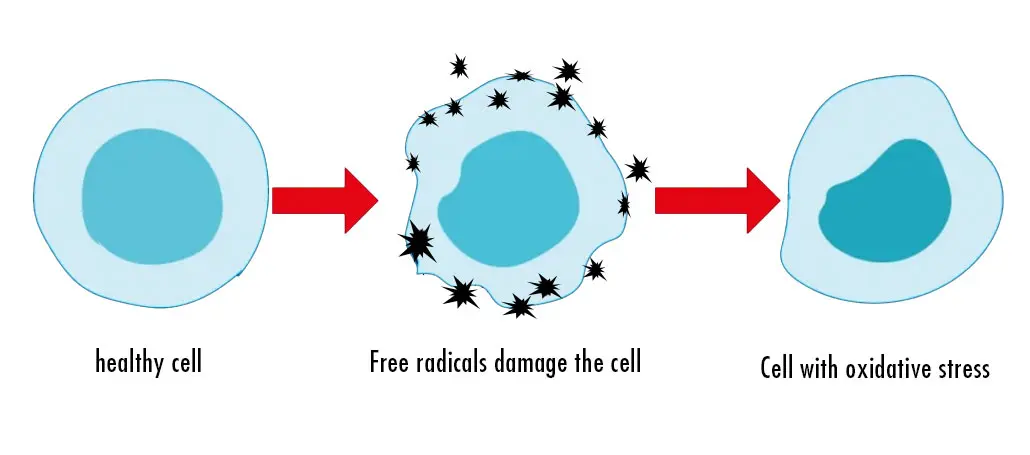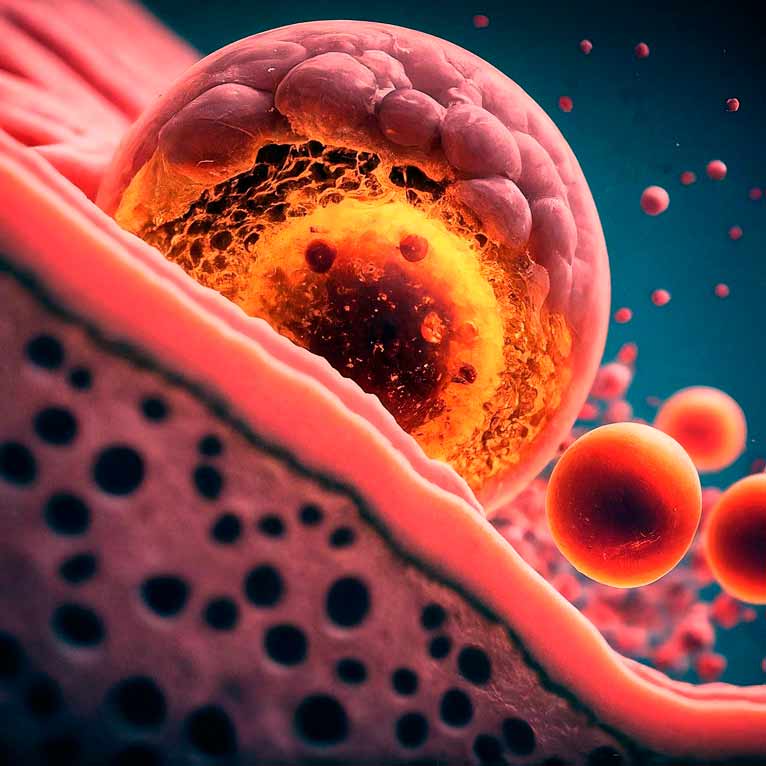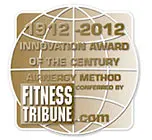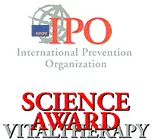
Oxidative stress: an elusive root cause of inflammation and diseases
Oxidative stress occurs when there is an excess of free radicals produced in the body and insufficient antioxidants to counteract them. It is closely linked with inflammation and is implicated in hundreds of diseases. Additionally, oxidative stress and inflammation are intertwined, creating a loop that exacerbates underlying health issues. The oxidative stress theory of aging suggests that structural damage and functional losses result from the accumulation of oxidative damage to macromolecules.
Despite strong evidence implicating oxidative stress in inflammation and diseases, clinical studies on antioxidants or supplements have mostly been unsuccessful as preventive measures. There have been various speculations and discussions regarding the paradoxical outcome observed between antioxidant prevention and oxidative stress. Some attribute the failure to inappropriate agents, while others suggest it is due to targeting the wrong factors.
In a previous article on free radicals, I discussed the essential roles of free radicals and the stringent requirements for antioxidants. Antioxidants must be present and active in the right location, at the right time, and in the right amount. This makes effective supplementation nearly impossible. Consequently, I often humorously remark to those who heavily supplement that they are essentially paying for expensive urine, as most supplements either degrade in the digestive tract or are excreted through urine. However, the key point is that the only way to reduce oxidative stress is to eliminate the need for excessive free radical generation.
This concept echoes the article on free radicals, emphasizing the importance of converting them into water, akin to hitting a “home run” in a baseball game. Unless this conversion is achieved, the body will continue producing more free radicals, which are essential for energy transfer and defense mechanisms. When pathogens are present or health conditions are compromised, the body requires heightened energy transfer and immune responses. Failing to address this demand adequately will only exacerbate the imbalance in energy requirements and immune functions. Therefore, let us delve further into the subject of oxidative stress to gain a better understanding of its mechanisms.

THE TWO DIFFERENT TYPES OF OXIDATIONS
The genesis of free radicals is a prerequisite for energy transfer, reactive immune responses, and metabolic processes. At its core, the essence of free radicals lies in the rapid transfer of electrons, occurring almost instantaneously, typically within a millionth of a second. Life operates in the delicate balance between capturing electrons in their high-energy state and utilizing the released energy for biological purposes. Oxidation, involving electron loss, contrasts with reduction, which involves electron gain. Oxidation primarily concerns electron loss or the uptake of oxygen from Reactive Oxygen Species (ROS), potentially leading to oxidative stress. However, two forms of oxidation manifest within the body: passive and active oxidation, each bearing distinct characteristics. Passive oxidation is a functional process influenced by environmental factors. It is a normal physiological process of propagation of oxidation due to lipid or protein oxidation. It happens typically in situations like physical exercises or even a meal intake. Thus, there are two important takeaway messages from passive oxidation:
1. No pain, no gain:
Physical exercise induces the generation of free radicals, triggering an immune response. While this contributes positively to health, the heightened production of free radicals also results in passive oxidation to facilitate energy transfer. This, in turn, prompts an increase in antioxidant capacity within the body. Nevertheless, excessive oxidative stress can culminate in "athlete fatigue" and shortening lifespan. So, don’t think exercise is only gaining health, it has its flip side.
2. Cholesterol isn't your enemy:
If we accept that energy transfer is constantly needed for our health, then we must understand that passive oxidation is a natural physiological process of a healthy body. However, the problem with this normal physiological process is that it potentially causes major damage to our body due to the oxidation of key components, such as essential proteins and DNA. Thus, lipids or cholesterols serve as a second layer of defense or “sacrifice” against oxidation after anti-oxidant enzymes. By sacrificing the non-essential component of lipids, those key proteins and DNAs can be shielded from harmful oxidation. This is something rarely understood by the public at large since the public impression is that cholesterols are bad. This misperception was created by the publication in TIME magazine in 1984 “Cholesterol is a killer”. This publication led to the fight against cholesterol and created unprecedently ripple effects around the world. Today, more and more scientific evidence has confirmed that this has been a major mistake in medicine. In particular, cholesterol is very important for the elderly population. Lower cholesterol levels lead to higher cardiovascular risks in elderly people and higher mortality occurs in cardiovascular patients with lower cholesterol levels.
Active oxidation, conversely, arises due to the activation of cellular receptors, indicating an inflammatory condition. In this scenario, the local antioxidant reserve proves insufficient to counteract the process, necessitating the mobilization of additional resources to combat it. This form of oxidation warrants our utmost concern as it is associated with pathological conditions such as illness and common habits or treatments like smoking, oral contraceptive use, or psychotropic drug use.
This brings us to another crucial consideration, particularly in light of the many failed antioxidant preventive studies. The efficacy of antioxidants against free radicals stems from their possession of free electrons, making them unstable. Once absorbed into the body (assuming they survive stomach acids), antioxidants require stabilization and must react with local substances. The concepts of oxidation and reduction mentioned earlier represent two sides of the same coin. In the absence of free radicals, antioxidants can function as oxidants, initiating a cascade of redox (oxidation and reduction) events. Due to their potent electron-mobilizing capabilities, antioxidants can potentially induce numerous unwanted reactions in the body. Hence, it's not surprising that improper use of antioxidants can lead to adverse effects.
WHY OXIDATIVE STRESS IS SO DANGEROUS TO THE BODY
We often talk about the term homeostasis to describe the physiological regulation in our bodies. It is a phenomenon that our bodies maintain their stable internal environment despite the changes that occur in the external environment. For example, the regulation of our body temperature, blood pressure, and the pH level in the blood. However, homeostasis is only a general internal response to ongoing physiological changes. There is another mechanism that regulates how the bodies respond to external stimuli, which is called allostasis. Allostasis is the mechanism that makes oxidative stress so dangerous to the body. Thus, to understand the impacts of oxidative stress, we must first learn about how allostasis works.
Allostasis was first described by two scientists as a new paradigm to explain arousal [1]– Pathologie im Handbook of Life Stress, Cognition and Health in 1988[2]. It is a physiological mechanism of regulation in which the body proactively anticipates and increases its energy response more than the initial environmental demands. The simplest way to explain, it is an “hyper-reaction” or ‘over-shoot” of the physiological regulation. The body constantly senses the stimulations from its internal and external systems. When there is a presence of danger or demand, it will respond with a much greater reaction. Allostasis is an essential mechanism in stress response, adaptation to chronic disease, and the regulation of the immune system. The generation of free radicals like ROS is the mean and the driver for raising energy and fighting a bacterial and viral invasion, this continuous over-shoot of ROS production will work like a snowball effect in the body. As such, the body will run out of antioxidant reserve which is needed for turning it off. In the meantime, supplements or many immune-suppressing drugs can also lead to unwanted adverse results. Inadequate supplement usage can stimulate a similar allostasis response in the body whereas immune-suppressing drugs will reduce the energy production that is needed for the body to fight diseases. This is the reason why oxidative stress is so dangerous and it is the root cause of hundreds of diseases.

Oxidative stress is the consequence of a cascade of accelerated regulatory responses to physiological demands, which require greater production of free radicals like Reactive Oxygen Species (ROS). This, in turn, requires an enhanced antioxidant capacity and physiological modulation. Its domino effect makes it hard to manage it. Moreover, seemingly good things such as exercises, supplements, or drugs can also backfire like a double-edged sword. So, the key to fighting oxidative stress is to let the body reset or reprogram to its original state. This is pretty much like what we do with the computer. When something goes wrong, the best way to solve it is to do a reset or reinstallation to erase the faulty programming. This reset or reinstallation for oxidative stress or inflammation is all about reducing free radicals to water to create pure green energy, which the body needs the most. This leads to the topic I intend to address in this article, which is how Airnergy can help reduce oxidative stress.
AIRNERGY FIGHTS OFF OXIDATIVE STRESS LIKE NO OTHER
The nature of how our body is empowered by energy and how our immune system is induced by free radicals have determined the limitations of human physiology. Today, biohacking has become a big buzzword in wellness and healthy aging. While numerous gurus and influencers have been trying to make the breakthrough, Airnergy has already done it like no other.
At the annual German biohacking event FlowFest23, I delivered a lecture on “The Tao of biohacking with Airnergy”. Here I am going to reproduce this work not only for biohacking or antiaging but also for fighting inflammation and illnesses connected with oxidative stress.
1. Understand Airnergy on oxidative stress from energy medicine
Energy medicine has been developed around the world for thousands of years, such as Chinese medicine and Indian Ayurveda. According to Chinese medicine, the two life forces of Yin and Yang determine the motion of energy. This motion resulted in the energy cycle of 5 elements.
Oxidative stress is a result of the fire energy of free radicals. This fire energy should be encountered by water energy to neutralize it. This is pretty much the same way as the Ayurveda principle. As mentioned in my previous article, free radicals carry the unstable energy that needs to be released. As the mother and matrix of life, water is the best medium to store this life force in its elusive biochemical structure.
Airnergy technology follows the principle of ancient energy medicine to preserve the life force in its system by replicating the photosynthesis and cellular respiration processes side by side to create a “perfect storm”. Its proprietary technology activates the stable triplet oxygen [3] to generate energy transfer from its light source to form singlet oxygen[4]. Then, its sparkling element with water acts as the finishing touch of cellular respiration to preserve the energy released from singlet oxygen. Essentially, Airnergy has combined energy activation and energy harvesting into a single step. This innovative approach is transformational for its users, particularly those who suffer from various chronic diseases or respiratory illnesses. In these patients, there is excessive free radical production, and there are not sufficient antioxidant enzymes to neutralize them in the body. Airnergy breathing can provide the required pure energy.
2. Understand Airnergy on oxidative stress from the art of breathing
Breathing is something that we all know somehow, yet we may not fully comprehend at the same time. Modern medical science primarily focuses on lung capacity and diaphragm movement, while Chinese medicine emphasizes CHI generation, and Indian Ayurveda highlights pranayama. Practices like meditation or Tao are more about quieting the mind. However, the truth is that everything is connected back to the essence of life.
As Nobel Prize Winner Dr. Albert Szent-Györgyi stated, the basic living functions are water and an electromagnetic field; oxygen dissolved in water for specific properties of electric excitation. This succinctly summarizes the essence of breathing. Nasal breathing stimulates the mind- body connection and activates the generation of Nitric Oxide, which signals a cascade of physiological events such as blood vessel dilation, hormone release, and mitochondrial oxygen consumption.
Airnergy delivers the essential life force through nasal breathing. It uniquely connects energy and breathing, which fundamentally addresses the causes and effects of oxidative stress simultaneously.
3. Understand Airnergy on oxidative stress from the law of physics
Dr. Ilya Prigogine, a Nobel Prize laureate, reshaped our understanding of nature and human biology with his dissipative structure theory. This theory serves as a scientific explanation for why free radicals adhere to the allostasis mechanism of "over-shoot" rather than homeostasis. It elucidates that the energy exchange between the human system and the external environment is never in equilibrium; instead, it tends to increase disorder or entropy.
Oxidative stress or inflammation initiates a negative biofeedback loop, demanding higher energy production, which in turn necessitates more oxygen to convert into free radicals. The metabolic activities of our bodies directly correlate with Reactive Oxygen Species (ROS) production. Consequently, oxidative stress manifests as a state of heightened disorder within the body, contributing to health deterioration and linked to numerous diseases and premature aging.
In this context, Airnergy plays a pivotal role in resetting the body to its coherent state by providing the necessary pure energy and eliminating the need for excessive ROS production.
OXIDATIVE STRESS FOR NONE, AINERGY FOR ALL
Oxidative stress is what nobody wants to have as it sets inflammation in motion and is the darkest pitfall to health.
Airnergy, on the other hand, is the elixir of life and the fountain of youth. It connects the energy from the father Sun with the matrix of the mother Water. In between, it provides detoxification and rejuvenation to all who breathe through it.
Be with life, be with Airnergy, and health and longevity will be with you!
Jibin Chi, MD, MBA, MBI CHI Awakening Academy, Sweden
Footnotes
Oxidative stress - An elusive root cause of inflammation and diseases - 032024.pdf
Honours and awards
Airnergy has received several awards and prizes for its progressive developments. These include the Century Award for Innovation, an innovation prize that has only been awarded once so far and recognises the Airnergy method in particular as the most holistic source of regeneration of the last 100 years, theWould you first like to find out what spirovitalization with Airnergy can do for you?
Your own experience is important
Would you like to try out what Airnergy can do for you? Here you will find a selection of different facilities throughout Germany and in other countries where you can experience "vitalisation with Airnergy". Energy cures with 10 to 20 treatments of 21 minutes each have proven to be a good way of getting to know Airnergy and achieving lasting vitalisation/detox effects. |use for|optimiseYour own energy station
Would you like to be using your own energy station at any time?Whether for use as a commercial service, for subsidised company health care (BGM) in the company or for you and your family at home, simply ask about the leasing, subsidy* and financing conditions.
We will be happy to support you! |Leasing |Financing
- Home
- Products & Shop
-
areas of usage
-
- Areas of application
- Areas of application overview
- COMPARING AIRNERGY
- COPD Pulmonary emphysema
- Asthma-Bronchitis
- Age -related macular degeneration - AMD
- Brainfog, the fog in the brain
- ME, CFS - Chronic Fatigue Syndrome
- Burnout Stress
- Hypertension
- Aromatherapie
- Beauty Fitness Wellness
- Anti-Aging
- Vet-Stream
- Free radicals
- Oxidative stress
- Company health
- Longevity
-
- Airnergy Vita
-
News
-
- Specialist article
- News
-
-
References
-
- References Experience
- Confessing airnergetics
- References Experience
- Certifications & awards
-
-
Info/ Service/ FAQ
-
- Downloads
- RÉSUMÉS FROM PRACTICE
- The science of anti-aging - A discovery changes the world
- Oxidative stress - an elusive cause of inflammation and disease- PDF
- CORPORATE HEALTH - The path to a healthy workplace pdf
- AMD macular degeneration - a creeping threat to vision in old age pdf
- COPD - An exhausting fight against breathlessness - strengthening from the patient with theAirnergy Stream pdf
- The undisguised truth - free radicals are essential for life pdf
- Airnergy during stress - A case study by Dr. Chi -pdf
- Whitepaper Dr Jibin Chi - Airnergy Stream - Journey through light and life pdf
- Chi specialist Dr. Chi breathes himself healthy with Airnergy pdf
- Specialist literature on somatovital therapy pdf
- Airnergy Image brochure pdf
- The little Atmos pdf
- Airnergy Compendium pdf
- Study-Comparison-Airnergy-and-o2Therapy-ZAEN-Schorllmann pdf
- Vet-Stream Mappe
- Airnergy-Vet-Stream flyer animals
- more PDF articles
- contact
- Location search
- DE


